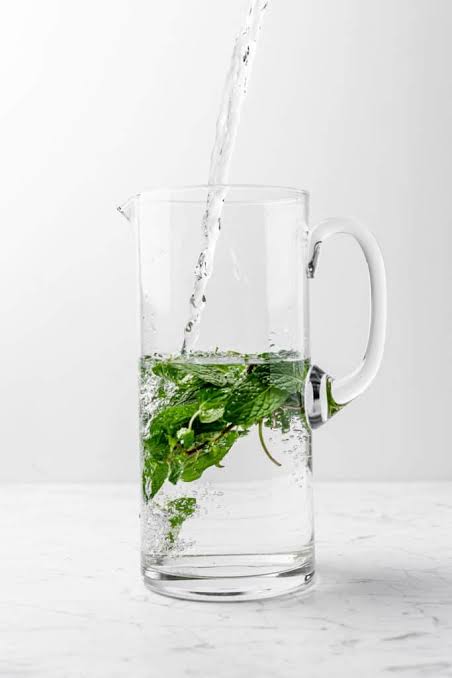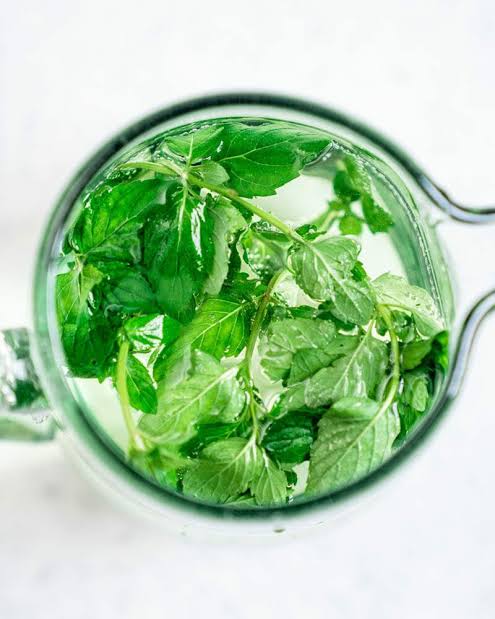REFUND POLICY
DELIVERY POLICY
Know About Mint water, nutritional benefits, how to make it and health benefits


Mint water is a fresh herb-infused beverage.
There’s a lot to love with mint water. It’s tasty, requires few ingredients, contains negligible amounts of calories and sugar, and it may even help you stay hydrated.
If you aren’t that keen on the taste of plain water but need more hydration, mint water could be your new drink of choice.
This article explains more about mint water, including its health benefits, homemade recipes, and potential downsides of this refreshing and low calorie drink.
What is mint water?
In short, mint water is basically an infused tea that you can enjoy hot or cold.
Mint belongs to the Mentha genus of plants — a group of about 40 species of fragrant perennial herbs.
These types of mint have been used for thousands of years as culinary herbs and for medicinal purposes.
Today, many people enjoy mint water because it’s a refreshing and healthy drink that you can make with just two ingredients — mint and water.
Two of the most popular species of mint are spearmint and peppermint. If you buy fresh mint from the grocery store, there’s a good chance it will be spearmint.
You’ll find spearmint or peppermint most often in mint water, though you could use any type of edible mint.
Mint water is a drink made by infusing fresh or dried mint leaves into water.
Mint water nutrition
Because mint water often contains just mint and water, it proves low in calories and sugar.
Two tablespoons of fresh spearmint leaves contain only 5 calories while the same amount of peppermint leaves contains about 2.5 calories.
In addition, spearmint and peppermint contain small amounts of other nutrients like protein and fiber, though spearmint boasts a decent amount of the minerals iron and molybdenum.
Many mint species also contain bioactive phytonutrients that may boost your body’s overall health.
But for the most part, you receive little nutrition from your mint water because of the small amount of mint in your water. Mint leaves remain a poor source for most macro and micronutrients.
Keep in mind, packaged mint waters may also contain more ingredients than just mint and water.
Extra ingredients won’t only change the flavor of your mint water, but they might change the nutritional profile. When you make your own mint water, you can add additional ingredients to make it to your liking — including honey or other sweeteners.
SUMMARY
Mint water is low in calories, sugar, and most other nutrients though it does contain a number of health-promoting plant chemicals called phytonutrients.
Does mint water have health benefits?
Mint has enjoyed a long and storied history within herbal medicine traditions. Perhaps it’s no surprise that mint tea may offer you some interesting health benefits.
Furthermore, some early research indicates how spearmint may be used to help balance your hormones and treat polycystic ovary syndrome — a hormonal condition that can affect women during their reproductive years.
It’s important to distinguish between mint and mint water. Though mint shows some potential as a therapeutic agent, herbal tea infusions like mint water have not yet been studied with proper depth.
Thus, some benefits of mint cannot be attributed to mint water directly.
Nevertheless, mint water offers some health benefits that you should consider. Consider these highlights:
A refreshing way to stay hydrated: Drinking water supports your metabolism, body temperature, circulation, and more. Still, some people struggle to drink plain tap water. Mint water possesses more flavor than plain water, yet it helps you stay hydrated all the same.
Might help with weight loss: Some research points to water as an aid in weight loss — especially when you consume mint water in place of other higher calorie beverages like soda and cocktails. Still, many researchers demand more studies to reinforce these claims
.
Supports digestive health: Some people find mint helpful in aiding their digestion and relieving stomach pain. Most research, however, on the topic has focused on essential peppermint oils rather than mint water itself.
SUMMARY
Drinking mint water can help you stay hydrated and may even help you lose weight — if it replaces higher calorie beverages in your diet. Some people also find mint water helps ease side effects of indigestion like gas and bloating.
How to make mint water at home;
Fill a jar or a small water canister with 4 cups (946 mL) of fresh water.
Rinse about 4 sprigs (about 25–30 leaves) of fresh mint. You can use more or less mint to your liking.
Gently crush the leaves until you begin to smell a minty aroma.
Submerge the mint sprigs into the water.
Let the mint and water sit for a few hours so the mint has time to impart its flavor into the water.
For a quicker infusion, you can also boil your mint water for 3–5 minutes before letting it cool. Also, you can enjoy it as a hot mint tea.
SUMMARY
Making mint water at home is as simple as covering a few sprigs of fresh mint with water and allowing time for its flavor to be absorbed.


